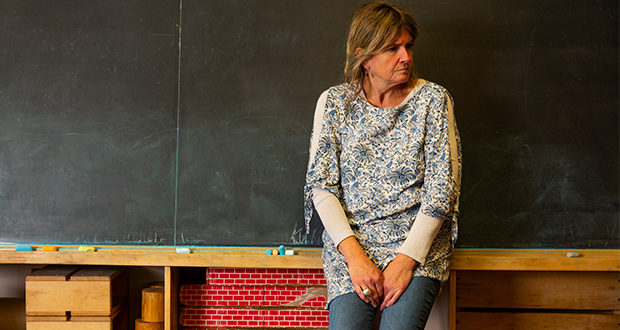An expert has urged Australia's educators to take the time to care for their mental health after a survey revealed widespread exhaustion and burn out across NSW schools.
A recent NSW state survey, released last week, revealed that more than 67 per cent of public school teachers have experienced signs of burnout. Experts believe these results aren’t surprising considering the current shortage crisis.
According UNSW educational psychology associate professor Rebecca Collie, high rates of burnout among teachers have risen over the past decade and are linked to increasing demands.
“The job has become more complex over the past few years, teachers are being asked to do more with the same amount of time and this added workload can lead to feelings of burnout,” Collie told Education Review.
Teachers experiencing burnout are more likely to have difficulties managing their mental health, and greater physical complaints such as headaches, fatigue, and joint pain as well as fatigue.
Burnout is also linked to students' wellbeing, as educators aren't able to provide the full level of support to students due to their difficulties to cope.
Additionally, Collie said burnout is heavily contributing to large numbers of teachers quitting education across Australia.
In Australia, almost 60 per cent of teachers plan to leave the profession within five years due to workload pressure, non-existent work/life balance and burnout.
“We have been focusing on student wellbeing, which is crucial, but we also need to focus more on teacher wellbeing otherwise we're going to lose more of our educators,” Collie said.
Recognising signs of burnout
According to Collie, burnout manifests in three different dimensions: emotional exhaustion, depersonalisation and reduced personal accomplishments.
The most common feeling of burnout is emotional exhaustion, which refers to feeling emotionally drained or overextended from work.
“If teachers are feeling fatigued about going to work in the morning, or if they're feeling that they have nothing left to give at the end of the day; those are signs of emotional exhaustion," Collie said.
Depersonalization involves distancing from colleagues or students by holding indifferent or cynical opinions.
“When teachers are feeling pessimistic about their work, they are separating themselves from others and can leave them feeling isolated from colleagues and students," Collie said.
The third dimension of burnout refers to feelings of reduced personal accomplishments, which impacts teachers' confidence in the job and their ability to work well.
“Teachers are feeling less adequate to successfully meet the requirements of the job, they have less confidence in their abilities and might not want to come to school anymore,” she said.
Coping with burnout
According to Collie, all teachers will experience feelings of fatigue, especially during busy school time, yet she said, it is important for teachers to recuperate and recharge to overcome and heal from those ordeals.
“There is a range of strategies that teachers can apply, and educators and schools must figure out what works best for them, as one strategy could work for some but not others.”
She said research has shown strong relationships between students and teachers and between colleagues can lower burnout.
Teachers can then build strong relationships with their students by implementing evidence-based social and emotional learning programs in the classroom.
“Social connections are crucial for teachers and students' wellbeing," Collie said.
If teachers are feeling like their students aren't motivated or engaged, Collie said they can undertake professional learning to engage more with students and build strong relationships.
Additionally, teachers should try to build relationships with colleagues, and formal or informal mentors, with whom they can collaborate and share various aspects of workloads.
“Schools can help teachers develop those strong relationships within the school community, they need to provide educators with time, as building these rapports demands commitments," Collie said.
“They should remove the extraneous workload that isn't critical and make it more efficient for teachers to build these relationships.
“Whatever time we can put towards developing links between the school communities is going to pay off down the track.”
Collie believes teachers could also work towards the idea of workplace buoyancy by identifying and noting down their biggest challenges at work, in order to build resilience.
Once teachers have identified the cause of their stress, they can consider strategies and resources to manage workplace issues.
“Teachers can also chat with a colleague who has worked with this class before and ask their advice about how to best engage those students," Collie said.
She said that through trial and error, teachers will be able to identify strategies that work for them and build their capacity to navigate the ups and downs of their job.
Schools also play a significant role in helping teachers manage their wellbeing.
“It is really about listening to teachers' needs and endeavouring to understand issues from their perspective," Collie said.
“School leaders can seek staff input on school policy by providing opportunities for staff to be involved in decisions and actions that are taken at the school.
“All of these types of strategies help teachers feel valued and help build these relationships that are crucial for wellbeing.”
As school holidays approach and the year comes to a close, teachers should enjoy their downtime to recuperate and recharge to prepare for 2023.
Do you have an idea for a story?Email [email protected]
 Education Review The latest in education news
Education Review The latest in education news
